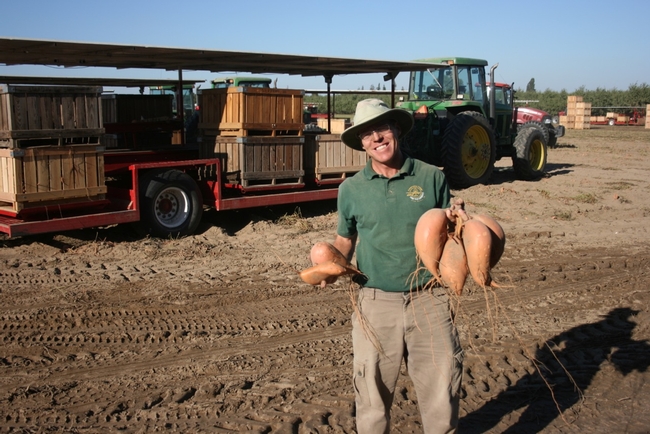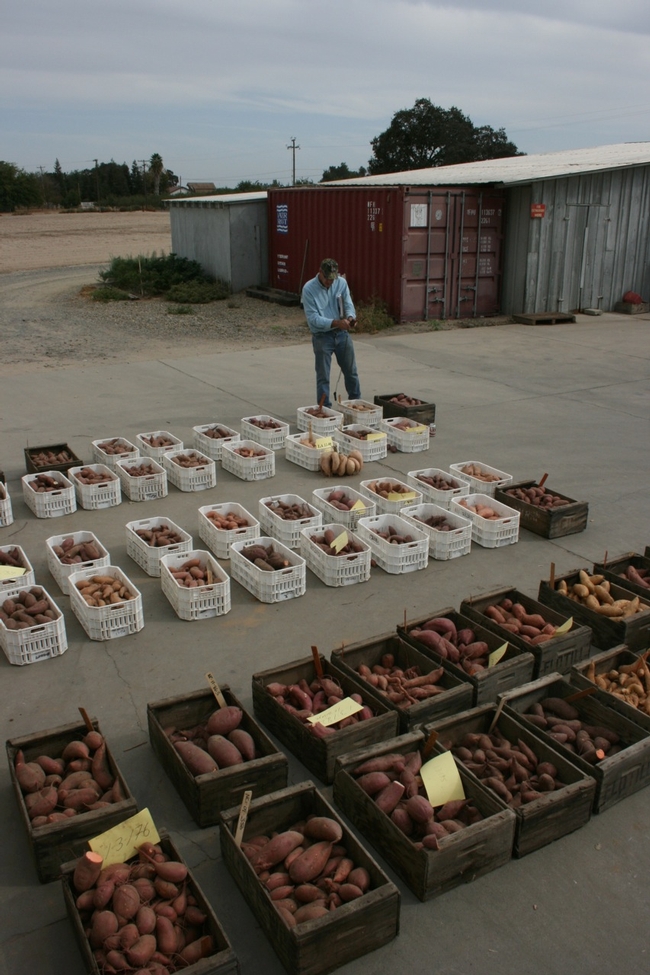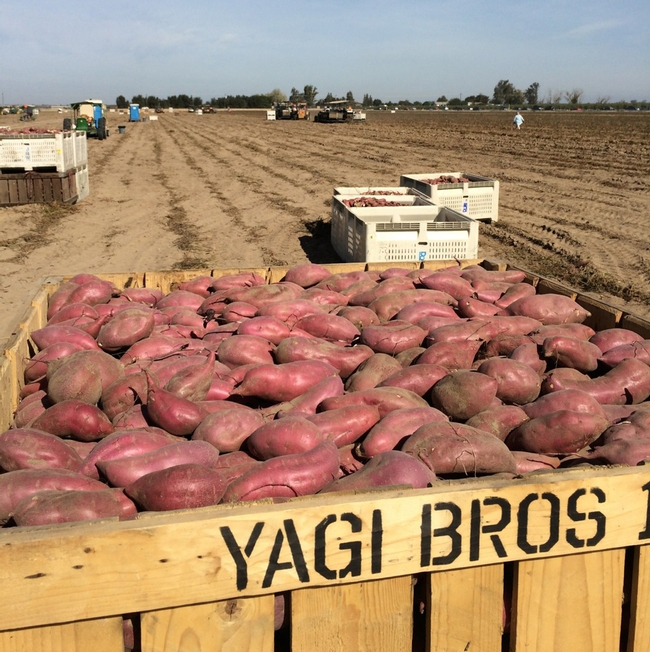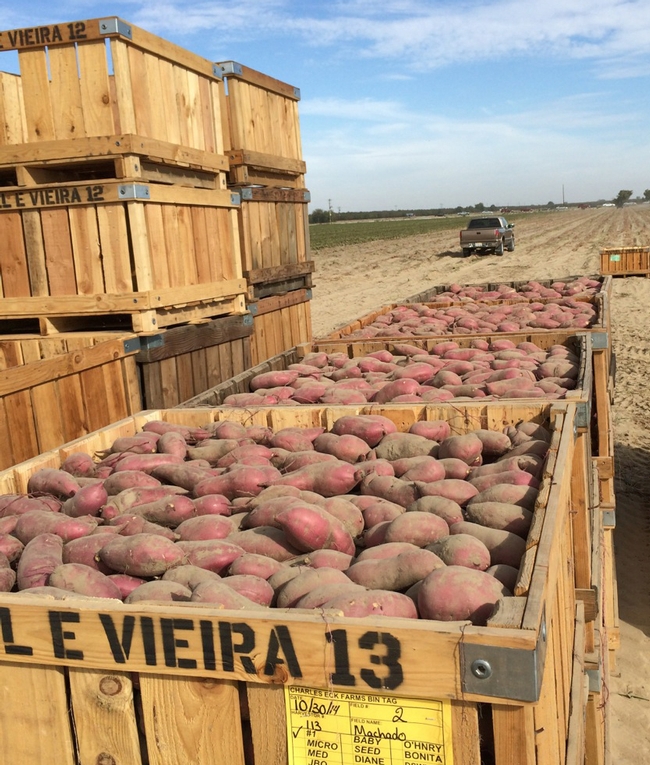
Although you may call them candied yams, if they were grown in the U.S., the soft, orange roots you've smothered in butter and brown sugar are sweetpotatoes. If you don't add butter and sugar, sweetpotatoes are a healthful sweet treat, loaded with vitamins A, B-6, C and E and potassium and manganese.
In California, sweetpotato classes come in four colors:
- Tan Jewell with orange flesh
- Light yellow Jersey with white flesh
- Purple Oriental with white flesh
- Red Garnet with deep orange flesh

“It's the same eye appeal as when people choose peaches,” Stoddard explained. “People tend to choose peaches with more red blush to the skin. Just as we tend to choose more colorful peaches, red-skinned sweetpotatoes are very popular, even more than the traditional tan skin sweetpotatoes that dominate in the rest of the United States.”
“The red variety is in high demand in LA, the Bay Area and Seattle markets,” said Jason Tucker, a grower and vice president of the CA Sweetpotato Council. “With our climate and sandy soil, we can grow any variety in California. It gives us so much flexibility and we're looking for new varieties. We can grow distinctive varieties, such as the Oriental variety, to meet demands even in other countries like Korea and Japan.”
Louisiana State University and North Carolina State University have the only two sweetpotato breeding programs in the U.S. For more than 50 years, UC has collaborated with the two universities in the National Sweetpotato Collaborators Trial, in which varieties are grown and evaluated in several states. Because the breeders are mainly interested in sweetpotatoes with light-colored skin, they used to discard the others. In 1998, Stoddard began screening their castoffs for high yields and sweet flavor in other colors.

In addition to high yields and consistent flavor in a variety, Tucker said, “We are looking for varieties that maintain a high level of sugar, or sucrose levels, smooth skin and a consistent shape with a distinct color – purple, red or white.”
Before Stoddard introduces a new variety to a California field, he has the plant material virus-tested by Foundation Plant Services at UC Davis.
A purple sweetpotato with white flesh called Murasaki is a variety that emerged from Stoddard's test plots in 2008 and is now being grown commercially. Burgundy, released in 2014, is the first variety with red skin and orange flesh released in 30 years. While Burgundy has better nematode resistance and improved storage characteristics, yields have failed to reach the numbers necessary to be commercially successful.

“It takes a few years to see if they will be successful,” Stoddard said. “Things always show up once you move from a small plot to millions of plants, that's when their true personality comes out. We'll see how they do in different soil and in different areas. All varieties have their own personality.”
About 300 acres of Bellevue were grown in California in 2014. Although it may only be grown in California, Bellevue is patented by LSU. The varieties are patented by LSU and NC State to provide funding for their breeding programs.
“Scott is a highly valuable asset to Merced County growers, he provides all of our sweetpotato research,” said Tucker. “He brings new varieties from North Carolina and Louisiana to California to find a new variety that works well in our soil and climate. He analyzes them so we can make better decisions about which varieties we will grow.”
About 90 percent of the estimated 20,000 acres of sweetpotatoes grown in the state are in Merced County, around Atwater and Turlock, where the soils are sandy.